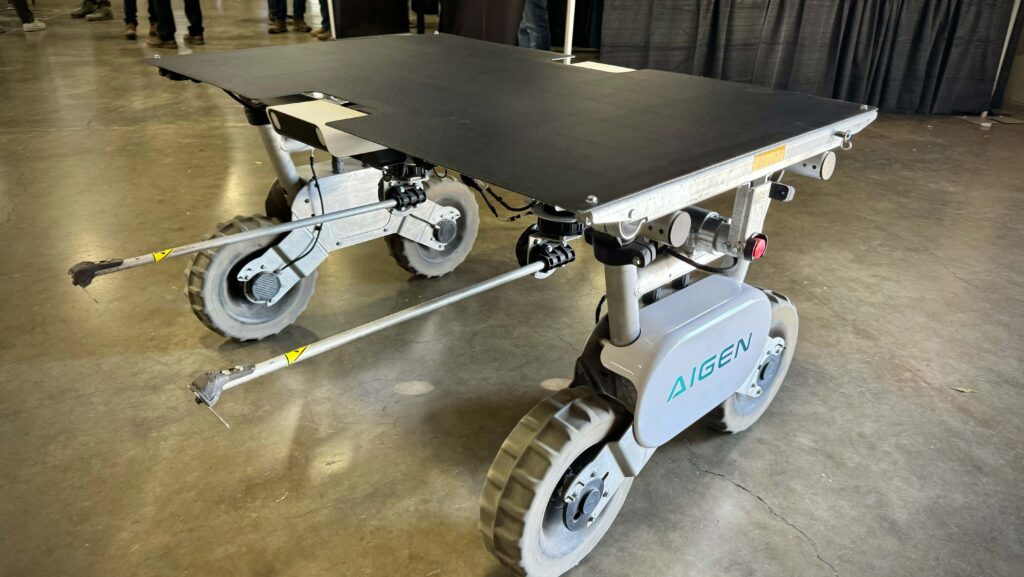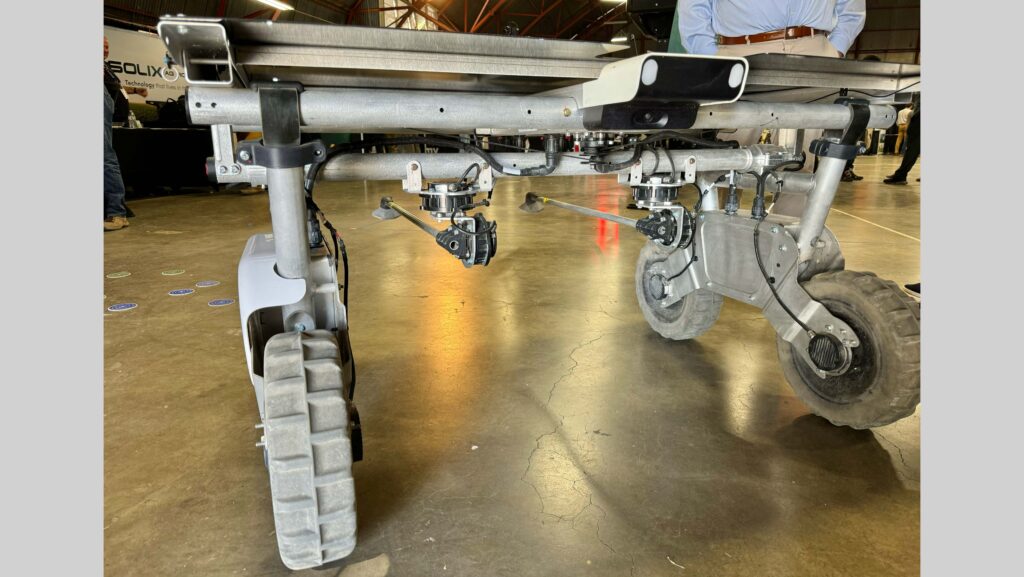Aigen to sell diddy solar-powered sugar beet hoe
 © MAG/Oliver Mark
© MAG/Oliver Mark Sugar beet harvesters might be the giants of UK agriculture, but a machine weeny enough to fit inside their cab might one day be working ahead of them.
Washington-based Aigen’s solar-powered and RTK-guided Element weeder is designed to trundle quietly along crop rows, with its pair of innocuous looking arms chipping unwanted plants from the soil.
A clever mounting arrangement allows these spindly protrusions to move through two planes – downwards and sideways – much like a pair of human arms.
See also: Buyer’s guide: Camera-guided sugar beet hoes
Triggering them into action is a camera and processor combination capable of differentiating crop from weed.
To give both the software and arms enough time to respond, working speed is literally pedestrian – an enthusiastic walking pace of about 1.6m/sec.
Given that, and its modest size, daily output is currently pegged at less than 2ha, so growers would need a reasonable fleet of them to make much of a dent in the workload.
To deal with particularly high weed burdens, the company is also building a version with a third sweeping arm to maximise the hit rate in a single pass.

© MAG/Oliver Mark
Four-wheel drive
Power is provided by a 250W solar array on top, which limits activity to daylight hours.
However, it’s super lightweight – about 50kg – so should be able to work even when ground is wet and sticky.
And the diddy skid-steer unit can handle challenging ridges and bumps surprisingly well, with each of the four wheels powered by an individual electric motor.
This arrangement allows it to drive in either direction; the chipping arms simply swivel through 180deg at the end of each bout to begin the next without turning around.
After initially offering the robots as a contracting service, Aigen is now selling its second-generation model to sugar beet growers suffering from chronic herbicide-resistant weed problems.
Cost is roughly US$50,000 (£38,500) for each machine, plus a US$20,000 (£15,700) annual subscription for the fleet.

